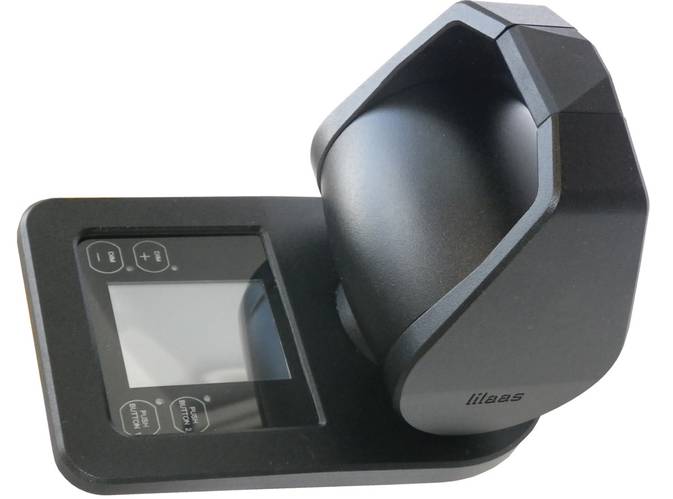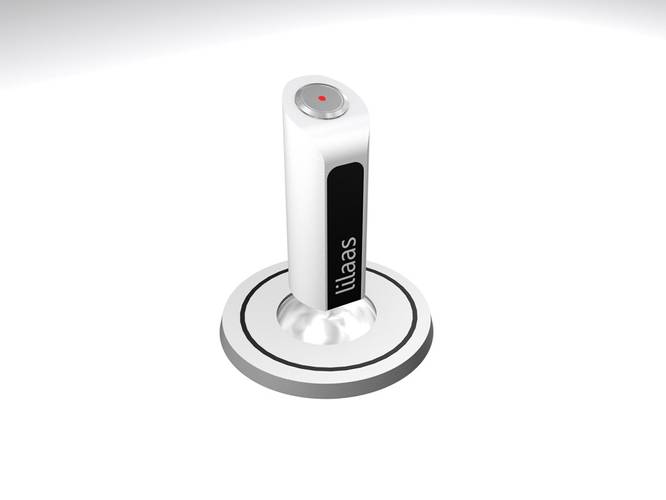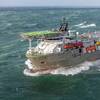Lilaas: High Design in Vessel Control
At the SMM 2012 exhibition in Hamburg, Lilaas debuted a family of innovative new marine control devices; innovation leveraging the storied company’s in-house software solutions and packaged in an elegant yet functional design.
The marine industry has many with small, innovative family owned companies, and it is no coincidence that more than a few hail from Norway. Lilaas is a leading supplier of control levers and joysticks for the shipping industry, a family-owned Norwegian venture that unveiled two new product series: a new range of electronic levers and an improved joystick. The new series come in a high-design package, but the change is far more than skin deep, as software control promise significant gains in operational efficiency and flexibility for the user.
“We kept it simple,” said Øyvind Lilaas, Managing Director, who has been with the company more than 25 years but in reality his entire life. “We surveyed our customers regarding the look and feel of the new products.”
“These two major product launches demonstrate our strength in the areas of both design and technology,” said Terje Akerholt, Lilaas’ sales and marketing manager. “There are many technical benefits that ship owners and operators will be able to get from these new products.”
In September 2012 Lilaas officially launched its new electronically-controlled LO1 lever range, a range driven by a high software content that is integral and represents a major step forward, according to the company. In fact, the company sees the use of software control in marine levers as not simply a turning point for the company, but indeed for the wider marine industry.
“There is no doubt we are pioneers in using this technology,” said Akerholt. “I believe strongly that all-electric levers like the LO1 series are the future and the arrival of this new range will mark a step-change for the industry.”
Essentially the LO1 range, which incorporates advanced software solutions and a digital display screen, brings together the functions of multiple joysticks or levers into a single unit. All of the various components and capabilities a customer wants to have can be pre-installed within the lever structure, and only a very shallow cut-out beneath the lever is required. In addition, a wide range of different functions, including tension and force feedback, can be programmed to meet individual customer requirements.
While the marine industry is sometimes dubbed conservative, Mr. Lilaas contends that the new generation of mariners – those brought up in the video gaming generation – are early adapters of technology and in fact demanding new products. “It’s important to remember that the real change here is the software control.”
A key feature of the design, developed in-house by Lilaas together with a company specializing in control system software, is the built-in TFT LCD display. This shows the position of the lever and feeds back information from the ship’s systems that are being controlled. The display screen also allows settings to be configured by the user to suit individual preferences.
A Quantum Change
“The use of software control versus hard wires is the quantum change,” said Mr. Lilaas. To help deliver this flexibility, Lilaas invested in a software program called CREO/Pro Engineer, which is a 3D software tool allows the designer to ‘talk’ with the machinery directly. No drawing is needed, enabling the company to quickly make adjustments and construct parts using the materials requested by clients. A benefit of the new lever design and the software installed within is that it makes it easier to introduce customizations that meet an individual operator’s preferences. “Every operator likes to work in a different way,” said Akerholt. "With the new generation LO1 levers it will be much simpler to take this into account.” Having the display as an integral part of the lever’s structure will also make the LO 1 class levers easier to use, as all of the information required by the operator is available in one place. The levers were designed to ensure a high degree of redundancy, in the event of technical problems, and feature capacity touch switches, with up to four for azimuth or single controllers and up to eight covering a double controller. The switch text has been engraved on the lever as an added precaution against electrical failure. Other features of the LO1 range include an isolated analogue and emulated potentiometer output, an isolated back-up system and an analogue dimming input.
Lilaas is marketing a core design platform for the LO1 series, with different models available for azimuth, thruster or propulsion control, and a range of options to facilitate customization. These include a 4-20ma current loop, relay outputs, display graphics, a USM interface, brushless DC motors, force feedback and the possibility of having either CAN bus, Profibus or Ethernet interfaces.
Brains & Beauty
While the core competency of the controls is undoubtedly the more critical consideration, considerable attention was paid to the visual impact of the new LO1 range. Lilaas has worked with Oslo-based Hareide Design to produce the distinct, bold aesthetics which makes the LO1 stand out. “The product combines a rational functionality with a focus on safety,” said Magne Ekerum Hoiby, Hareide’s creative director. “We chose not to use any kind of styling, so the physical shapes are pure and functional, yet proportional and balanced. The graphic display as well, with its ultra-basic look, is a contrast to modern 3D graphics.”
Hoiby believes the most significant element of the new lever range is that it embodies Lilaas’ unique qualities as a company. “The fine mechanics, achieved through hidden screws and fasteners, as well as the subtle highlighted surfaces, can only be produced through high precision milling,” he said. “Also the distinct silhouettes of the sharp and angled outboard arms, and the simplistic form of the physical and digital elements, reflect the best values within the Lilaas company and the unique way that they work.” The result, Mr Hoiby believes, is a strong and distinct design identity that reflects the Lilaas image, and yet is still general enough to fit in with the console layouts of many different clients. “The LO1 levers have a design DNA that is far from typical,” Hareide said.
The process of securing DNV approval for the new levers is advanced and a pilot order has been secured. The LO1 levers will be installed for the first time on a series of newbuildings for an offshore operator.
LO4 Joystick
Lilaas is also marketing a new joystick, type LO4. The primary aim of this particular R&D initiative has been to allow greater control sensitivity on offshore and other vessel types. To achieve this, the new unit incorporates magnetic touch-free sensors and dispenses with the need for a potentiometer. The design approach adopted by Lilaas offers users a number of benefits. The LO4 joystick is compact and requires only a small amount of space to be provided under the mounting plate. In addition the use of magnetic sensors makes the movement of the joystick smooth, ensuring that it is user friendly and accurate to operate. Other features include adjustable brakes, a push button with a light, and spring-return and switches on both X and Y axes. Furthermore all axes can be used simultaneously.
“We decided to use a magnetic sensor that is physically smaller than a traditional potentiometer,” said Espen Hoff, Lilaas’ R&D manager, in explaining the main aim of the in-house design team: to produce a joystick that was smaller, and also offered better ergonomics when operating at 45 degrees. “The sensor’s size gave us the opportunity to produce a more compact mechanical solution with fewer parts than before.”
DNV type approval has recently been secured for the LO4 joystick. In fact the classification society has confirmed the certification at a higher level than originally requested by Lilaas, and so the LO4 series is now DNV approved at the IP-56 standard and also IEC 60945 and IACS E10.
www.lilaas.no
(As published in the November 2012 edition of Maritime Reporter - www.marinelink.com)






















